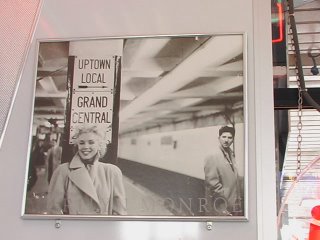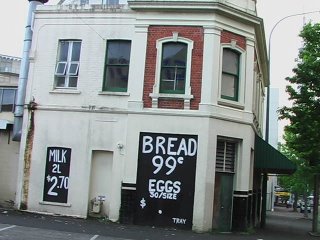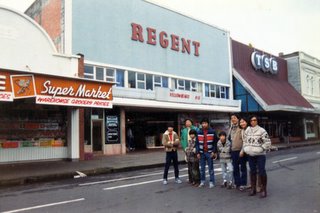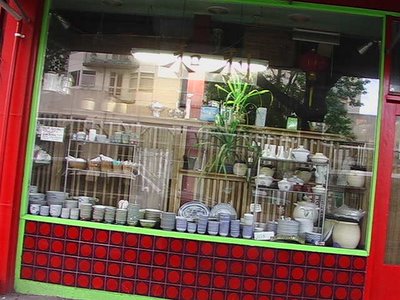Chui Ngan Ying
1929 - 2005
Known to us all as May Chong, Ma Ma, Por Por, and Aunty May.
May was born in Punyu County, China, on August 20 1929. She was the eldest daughter, and second child of the Chui family. At the age of one she moved to Canton with her family, and lived the city life as a daughter of wealthy landlords.
She spoke little of the hardships as a child, during the Japanese occupation of the 1930s, and we know very little of her life and family in China.
She married Kenneth Chong, of Manaia, in Canton, in 1949. This was just as the Communists declared the People's Republic of China on October 1 1949. She had a certificate to leave China, citing that she was not evading military service.
They flew to Sydney and then on to Auckland – in a Sunderland aircraft – landing in Mechanics Bay.
Settling in South Taranaki, May worked alongside Ken and in the mid 1950s had their fruit shop in High Street. She looked after her family as well as working. Her cooking skills were fantastic as everyone here will attest.
After Ken’s father, Chan Sheen Chong died in 1957, the High Street Shop was sold. Ken worked at Maypole and had his market garden from1957 to 1964. Both worked very long hours in the garden, to ensure their 4 children had a good education.
Being the only Chinese family in the town had its hardships as well. The ingredients for Chinese cooking were never available, and everything had to be made from scratch. Chinese sausages were a luxury that came from Sew Hoy’s in Dunedin. Noodles were home made, and if you wanted a fresh chicken, you killed your own.
In late 1964, Ken unexpectedly died at the age of 39. May fortuitously carried on, a lonely life bringing up Barbara, Helen, Allen and Kevin on her own. Her English was limited, but with the help of Barbara Battersby, she overcame some of this, and applied for citizenship in 1968.
Both Allen and Helen left town in 1970 – Allen to Wellington and Helen to Auckland. May decided that she too would go to Auckland, with Barbara and Kevin.
So began her Auckland life – where there were other Chinese with whom she could communicate. She worked hard in the Loo’s fruit shop in K Road, then in Asia Restaurant, Otahuhu; and lastly worked with Barbara in her business.
When yum char became available, she was pleased – at last she didn’t have to make her own dim sums, roast chicken and BBQ pork weren’t a chore and Chinese groceries were easy to source.
May made a trip to China in 1980, where she met with her mother, brothers and sisters. She’d been away from home for 32 years, but life in New Zealand must have had an impact on her view on life as she only spent 24 hours of the planned 10 days before leaving suddenly for Hong Kong. This was to be her last trip home.
May had nine grandchildren - Eleanor the eldest, followed by Jody, Wendy, Anna, Mark, Cristabel, Lian, Francine and Simon. They all loved her dearly. The postcards and Christmas cards from abroad were eagerly awaited, and if you looked on the fridge door, you would see them, in pride of place.
Since May’s passing, many people have called to speak about her. Betty Loo said that May was a lovely lady, tiny, but with a good heart. Kim Gee also spoke well about her – memories of her working hard, and the cakes she made for the cooks at Asia showed that she had a kind heart.
All here today share special memories of her dynamic and complex nature, she has greatly affected those she has come in to contact with and has also allowed them to share in her life.
Although she was alone when she came to New Zealand she reveled in the company of the many friends she made throughout her time.
May was the only one of her family to come to New Zealand. But her place in all of our hearts shows that she cared for each and every one of us. She was a very private person, but each of us knows that she was a very special person – who did it her way.
Three of her grandchildren, Wendy, Anna and Mark could not be with us today as they are currently on a journey to China to discover some of their roots and culture. However they send their best regards and condolences, as do all those who could not be present today.
Track List –
1- Crying in the chapel – Elvis
2- Let it be – The Beatles
3- Candle in the wind – Elton John
4- Blowing in the wind – Peter, Paul and Mary
5- Psalm 23 – Kathy Tricoli
6- My Way – Frank Sinatra
7- How Great Though Art – Elvis
Those were the days my friend We thought they'd never end We'd sing and dance forever and a day We'd live the life we choose We'd fight and never lose For we were young and sure to have our way. La la la la... Those were the days, oh yes those were the days
Thursday, December 29
Wednesday, December 7
Maypole Super Market
Saturday, December 3
Marilyn

She was born Norma Jeane Mortenson on June 1, 1926 in Los Angeles, California, to Gladys Baker. As the identity of her father is undetermined, she was later baptized Norma Jeane Baker. Gladys had been a film cutter at RKO studios, but psychological problems prevented her from keeping the job and she was eventually committed to a mental institution.
Intermediate - 2 years in the middle

Intermediate schools were first opened in 1922. They were called Junior High Schools and most were attached to secondary schools. In 1933 the term Intermediate School was officially used . Intermediate school pupils and those in Forms 1 and 2 in primary schools received what was called Manual Training. Pupils had no choice about following the sexist role. Girls studied cooking and boys went to woodwork. Girls were taught sewing in their primary school classes, but all the sewing was done by hand.
School Desks To hide behind
School desks had a round hole for the ink well and ink monitors were appointed for each class. They had to keep the ink wells filled - a messy job for those who didn't have a very steady hand. From about standard 4 (present year 6) pupils worked in ink instead of pencil, and it was very hard for some of us to keep our work free of blots and smudges. Blotting paper was an absolute necessity! Girls with long plaits sometimes had the ends dunked in the inkwells of the desks behind!
Milk - came in Glass Bottles
The milkman delivered the milk and in our younger years we remember putting out a billy (a metal container like a saucepan with a lid and a handle over the top). The milkman filled the billy with a measure from his large can of fresh, untreated milk. Tom recalls his mother 'scalding' the milk in hot weather - heating it to near boiling point to prevent souring.
No such things as sliced bread

Double loaves which could be broken apart leaving an uneven slice at the end of each loaf. We called these the kissing crusts and loved the taste of them when the bread was new. There was keen competition to get that slice. We could tear off a piece of it which tasted especially good as it often felt like a forbidden treat if taken when no one was looking. http://www.nzine.co.nz/views/guinz25-50_part1.html?Rcat=History&Tcat=Growing_Up_In_NZ
Subscribe to:
Comments (Atom)

